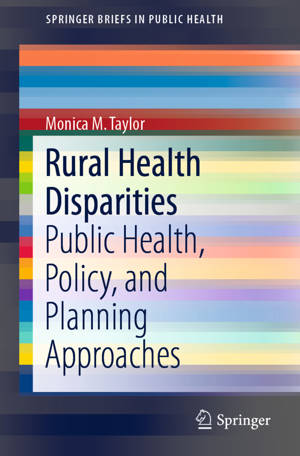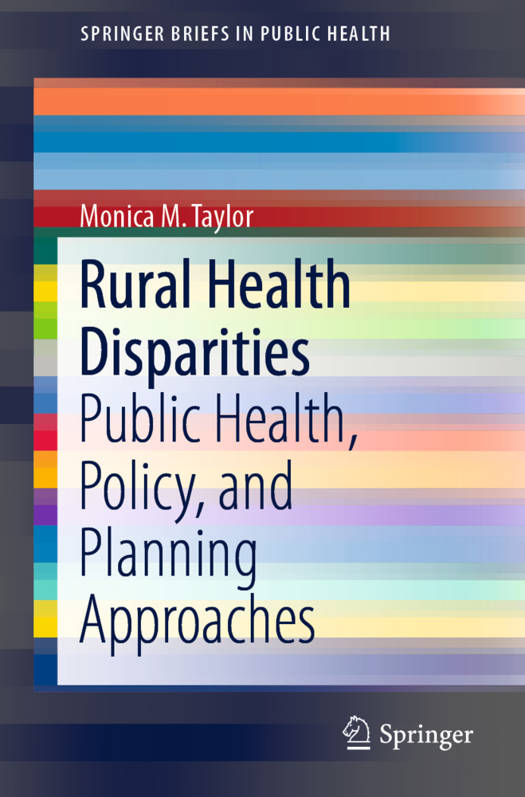
- Afhalen na 1 uur in een winkel met voorraad
- Gratis thuislevering in België vanaf € 30
- Ruim aanbod met 7 miljoen producten
- Afhalen na 1 uur in een winkel met voorraad
- Gratis thuislevering in België vanaf € 30
- Ruim aanbod met 7 miljoen producten
Zoeken
€ 68,95
+ 137 punten
Omschrijving
This innovative resource offers a unique, multidisciplinary approach for the utilization of planning theory to eliminate health disparities in rural communities. The book provides tools in the public health, policy, and planning disciplines to help resolve significant differences in life expectancy and quality of life in these communities, concluding with a progressive vision for alleviating geographical health disparities on a local, national, and global scale. Chapters highlight models and approaches best suited to addressing this public health concern, suggesting action strategies focused around each of the three focus areas:
1. Public health: Elucidation of the contextual factors impacting the health of rural communities by: reporting statistical updates on a range of chronic and infectious diseases that disproportionately affect rural populations both globally and in the U.S.; providing discourse on the importance of addressing criticalsocial determinants (global and national) that impede optimal health outcomes among rural populations; and, acknowledging the compositional factors of individuals who reside in rural spaces.
2. Public policy: Application of specific policy models to garner both public and political will towards sustainable policy change to improve healthy living in rural spaces.
3. Rural planning: Identification of national and international planning models that can be used to design strategic plans targeted to improve quality of life, create sustainable development, and establish economic well-being and growth in rural communities.
Rural Health Disparities: Public Health, Policy, and Planning Approaches will find an engaged audience among non-profit organizations, planners, public health practitioners, policy analysts, and public interest groups, as well as rural health advocates and students enrolled in planning, public policy, and/or public health courses.
1. Public health: Elucidation of the contextual factors impacting the health of rural communities by: reporting statistical updates on a range of chronic and infectious diseases that disproportionately affect rural populations both globally and in the U.S.; providing discourse on the importance of addressing criticalsocial determinants (global and national) that impede optimal health outcomes among rural populations; and, acknowledging the compositional factors of individuals who reside in rural spaces.
2. Public policy: Application of specific policy models to garner both public and political will towards sustainable policy change to improve healthy living in rural spaces.
3. Rural planning: Identification of national and international planning models that can be used to design strategic plans targeted to improve quality of life, create sustainable development, and establish economic well-being and growth in rural communities.
Rural Health Disparities: Public Health, Policy, and Planning Approaches will find an engaged audience among non-profit organizations, planners, public health practitioners, policy analysts, and public interest groups, as well as rural health advocates and students enrolled in planning, public policy, and/or public health courses.
Specificaties
Betrokkenen
- Auteur(s):
- Uitgeverij:
Inhoud
- Aantal bladzijden:
- 60
- Taal:
- Engels
- Reeks:
Eigenschappen
- Productcode (EAN):
- 9783030114664
- Verschijningsdatum:
- 29/03/2019
- Uitvoering:
- Paperback
- Formaat:
- Trade paperback (VS)
- Afmetingen:
- 156 mm x 234 mm
- Gewicht:
- 113 g

Alleen bij Standaard Boekhandel
+ 137 punten op je klantenkaart van Standaard Boekhandel
Beoordelingen
We publiceren alleen reviews die voldoen aan de voorwaarden voor reviews. Bekijk onze voorwaarden voor reviews.











